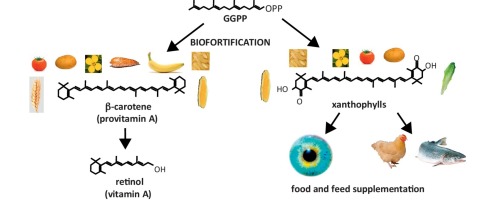Many definitions have been given to biofortification from different point of view, it has been defined as the increase of micronutrients in the edible parts of the plants, and it is achieved by either mineral fertilization or plant breeding. Biofortification by mineral fertilization has been seen as a common practice in some countries that applied selenium-containing fertilizers as a short-term solution for improving the selenium content of wheat. It is also the process by which the nutrient density of food crops increased through conventional plant breeding, or improved agronomic practices and/or modern biotechnology without sacrificing any characteristic that is preferred by consumers or most importantly to farmers.
Biofortification recognized as a nutrition-sensitive-agriculture intervention that can reduce vitamin and mineral deficiency. The biofortified crops do improve nutritional status and biofortified crops are more nutrient-dense than non-biofortified varieties in the biological mechanism. There assuming similar micronutrient bioavailability and retention after processing and storage, when it is consumed and absorb more micronutrients from eating biofortified crops than from the same quantity of non-biofortified crops. Therefore, in populations with a diet limited in these micronutrients, the consumption of biofortified staple crops can improve micronutrient intake.

There are two major behavioral issues related to biofortification, which are one for the consumer and one for the Farmers. Farmers are interested in growing new varieties which are agronomically superior to the current varieties they plant, eg. cultivars which are more drought-resistant, possess more yield or less susceptibility to diseases.
Therefore, biofortified varieties need to be agronomically equivalent or preferably superior to the less nutrient-dense market and traditional varieties with which they will compete. Provitamin (A) carotenoids impart color to foods; therefore, biofortification with these carotenoids change the color of crops. Motivating consumers to change their buying and eating habits from white- to orange-fleshed maize, cassava, or sweet potato can be of a challenge.
As a result of the long duration of developing biofortified crops and its relation to agriculture and not to health as more well-known strategies such as industrial micronutrient fortification and supplementation, mean that most program activities possess traditionally centered on quickened the process of selective plant breeding. However, these change with the use of lesser and more efficient laboratory tests to detect the promising varieties and because biofortification is being recognized as a sustainable strategy to be included in various country programs on food and nutrition security.